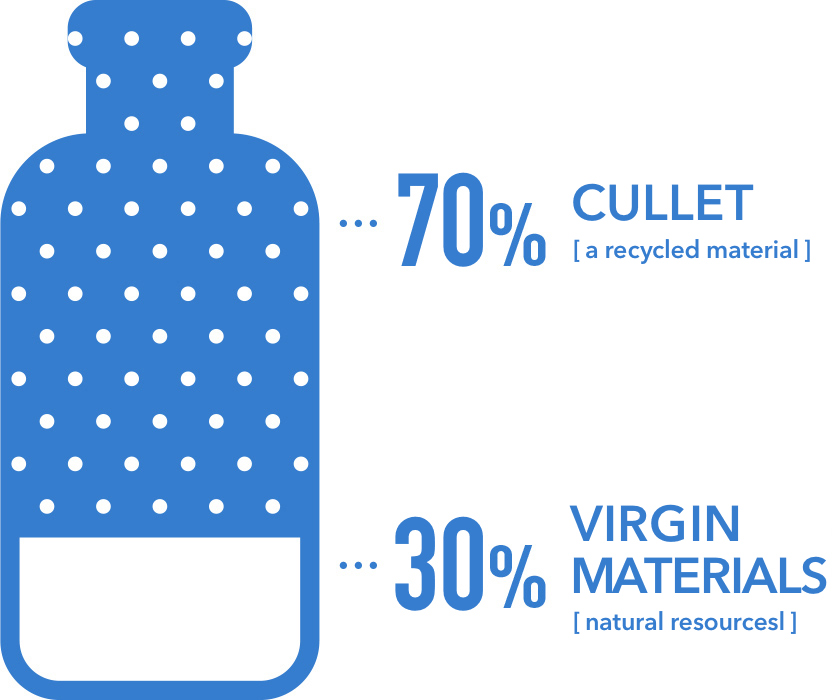ENVIRONMENTAL FEATURES OF GLASS BOTTLES
ENVIRONMENTAL
FEATURES
OF GLASS BOTTLES
Proceeding into the future with glass bottles
Glass bottles are made from valuable natural materials found in the earth.
Glass is a material that is considered ocean-friendly, forest-friendly, and human-friendly.
Glass remains useful because it can be recycled over and over again from glass bottles.
Environmental features of glass bottles Four key points and two answers

Plastic waste
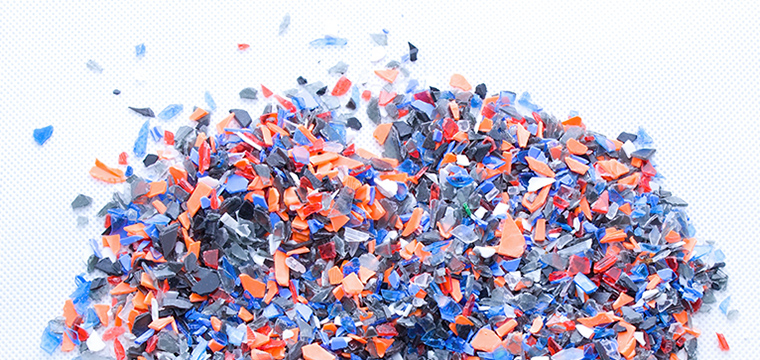
Answer to the increasingly serious global problems of marine plastic waste and microplastics
Ethical consumption
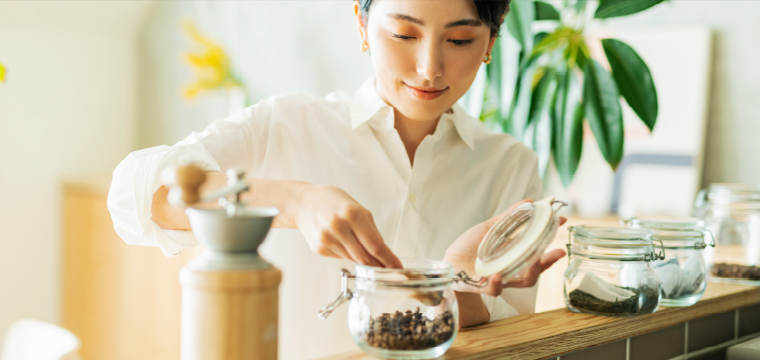
Answer to consumption behavior considerate not only of convenience but also of the environment and society
MATERIAL CHARACTERISTICS OF GLASS BOTTLES
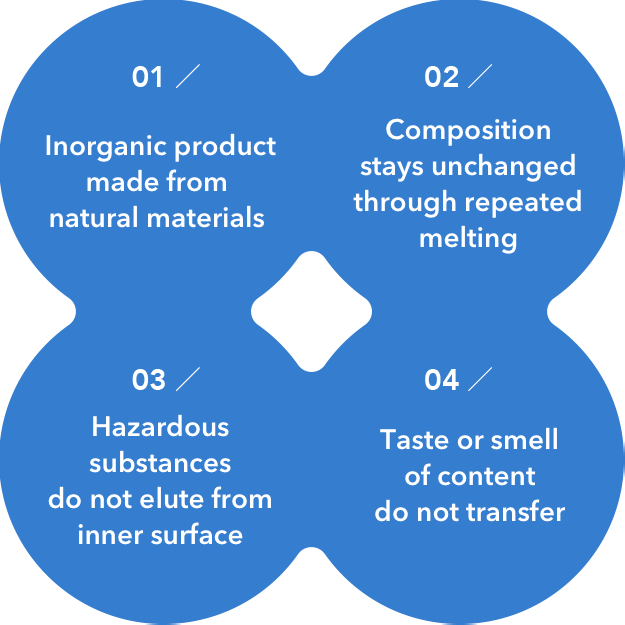
Glass bottles have diverse features unique to inorganic products made only from natural materials. Because of these material features, glass bottles satisfy all 3R that are indispensable for the achievement of a recycling-oriented society.
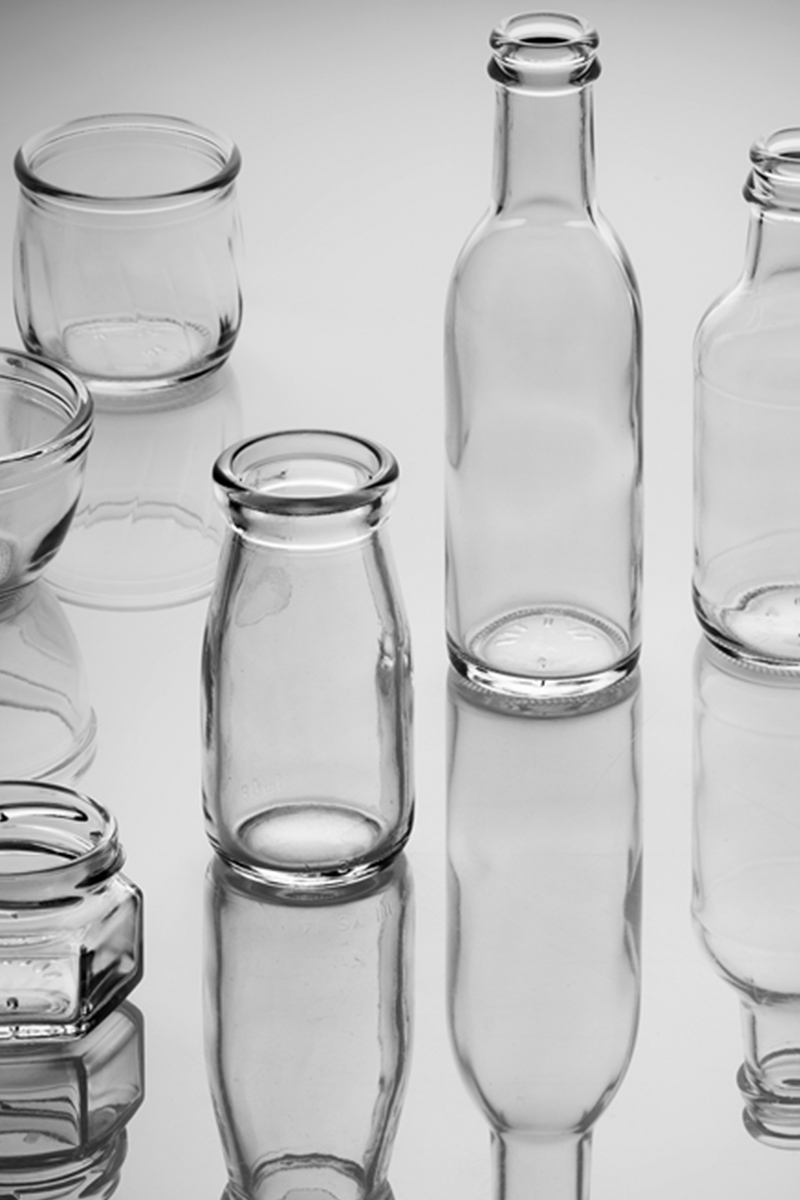
3R OF GLASS BOTTLE
REDUCE REDUCE THROUGH WEIGHT REDUCTION
Friendly to the environment and to humans through the weight reduction of glass bottles
Weight reduction leads to the saving of virgin materials as natural resources that are consumed and of energy for melting materials in furnaces, while also reducing CO2 emissions generated during transportation. Weight reduction also increases the ease of handling by consumers and retailers.
- Saving of natural resources
- Saving of energy
-
Reduction of CO2
emissions - Increased ease of handling

Ultra-lightweight bottles produced with advanced technology
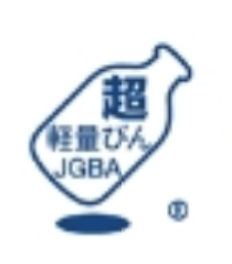 Our state-of-the-art technology has enabled ultra-lightweight bottles of the global highest standard. By upgrading all technologies in the production process, the thickness of glass bottles has been minimized while maintaining strength and uniformity, thereby achieving amazing lightweight.
Our state-of-the-art technology has enabled ultra-lightweight bottles of the global highest standard. By upgrading all technologies in the production process, the thickness of glass bottles has been minimized while maintaining strength and uniformity, thereby achieving amazing lightweight.
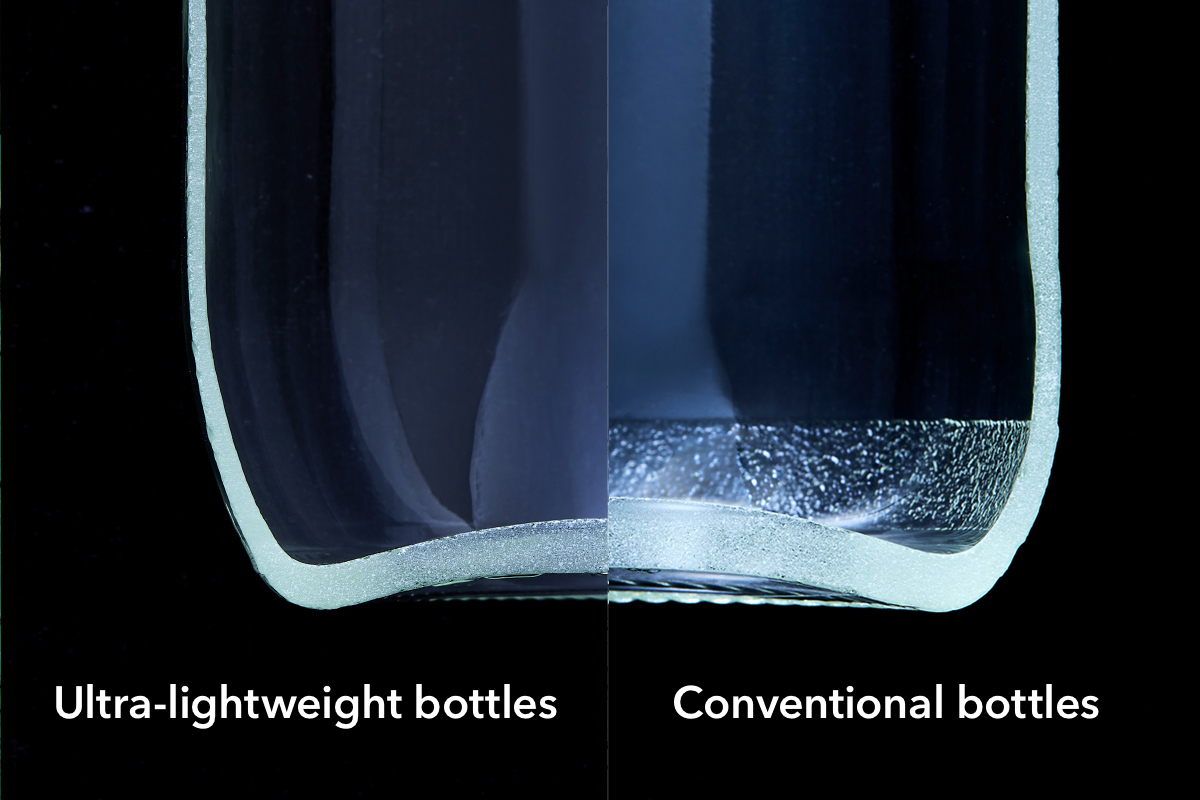
REUSE WASHING AND REUSING GLASS BOTTLES
An ecosystem unique to glass bottles
Reusable glass bottles are referred to as “returnable bottles.”
Reuse is achieved by the material features unique to glass bottles, such as not adsorbing the flavor of content, not being affected by acids or organic solvents, and container components not eluting from the inner surface. The reuse system of glass bottles was started with one-sho sake bottles more than 100 years ago and has been operated to date through partnerships with municipalities and related service providers.
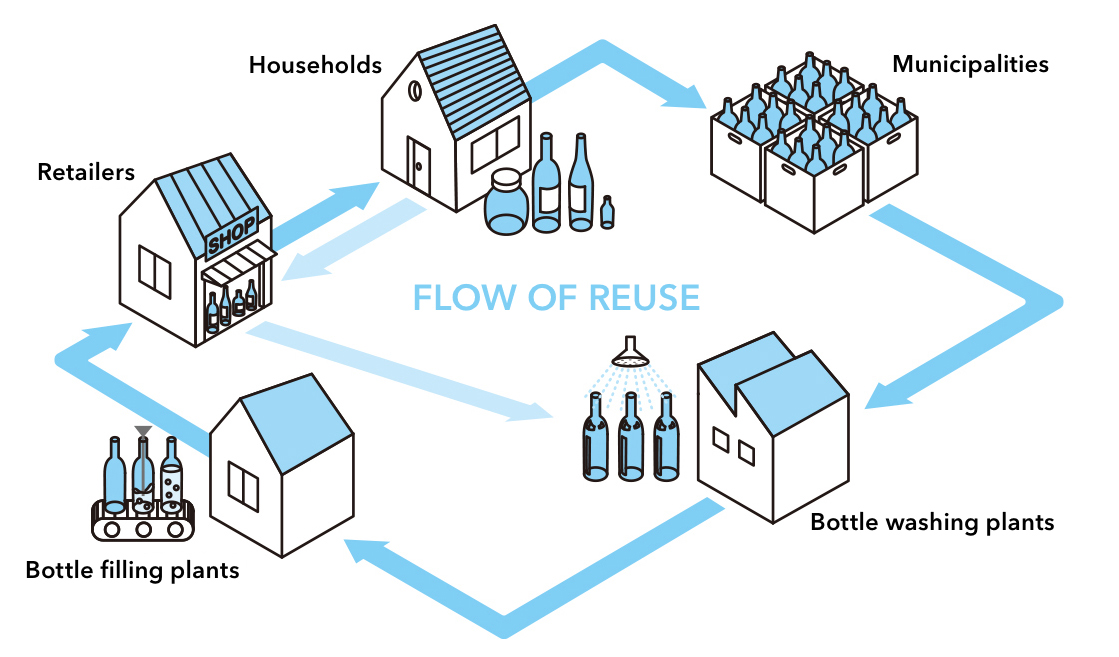
Returnable bottles are used in a wider range than commonly assumed
At present, about 1.1 billion returnable bottles are in distribution in Japan, including milk bottles, beer bottles, soft beverage bottles, and sake bottles.
*Results 2021 based on “Changes in Estimated Returnable Bottles by Purpose” by the Glass Bottle 3R Promotion Association
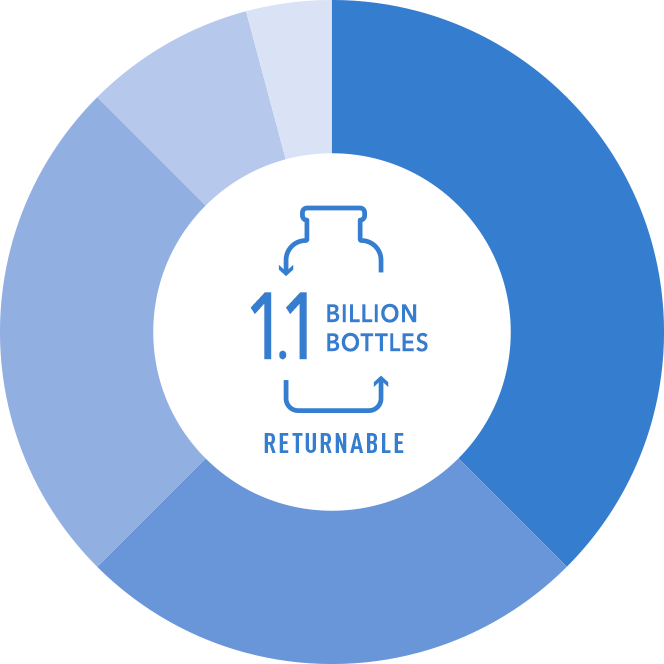
The use of returnable bottles leads to the substantial reduction of greenhouse gas (GHG) emissions.
The use of returnable bottles enables the substantial reduction of virgin materials for the production of new glass bottles, energy consumption, CO2 emissions, and waste generation, leading to the suppression of GHG emissions. Returnable bottles are environment-friendly containers with increasing effects through repeated use.
*The data are based on the results of the research conducted by the Glass Bottle 3R Promotion Association in 2021.
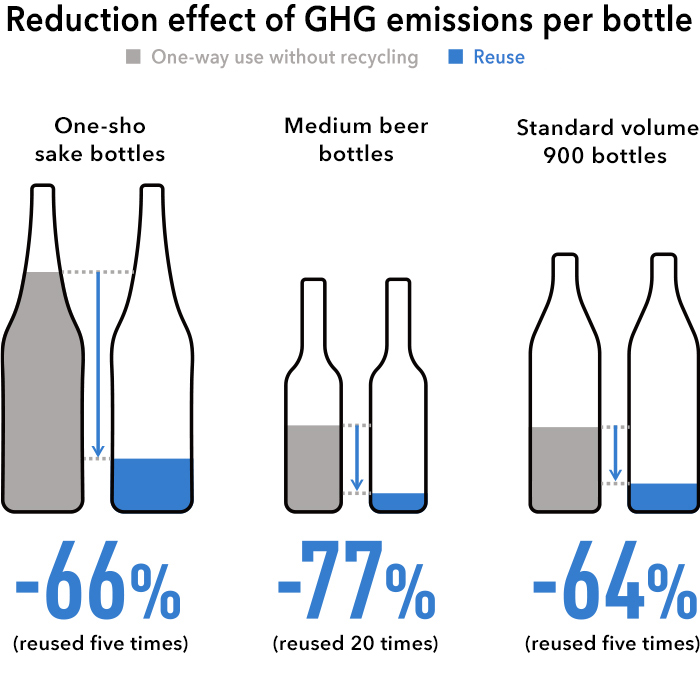
RECYCLE BOTTLE-TO-BOTTLE CLOSED-LOOP RECYCLING
Glass bottles can be recycled into glass bottles over and over again.
Glass bottles that are separated and collected by the municipality are processed into cullet (a recycled material) by a specialized vendor. Glass bottles are sorted by colors, shredded, and subsequently foreign objects are removed with magnetic force or wind force. No water or chemicals are used. By remelting cullet, glass is recycled into new glass bottles over and over again.
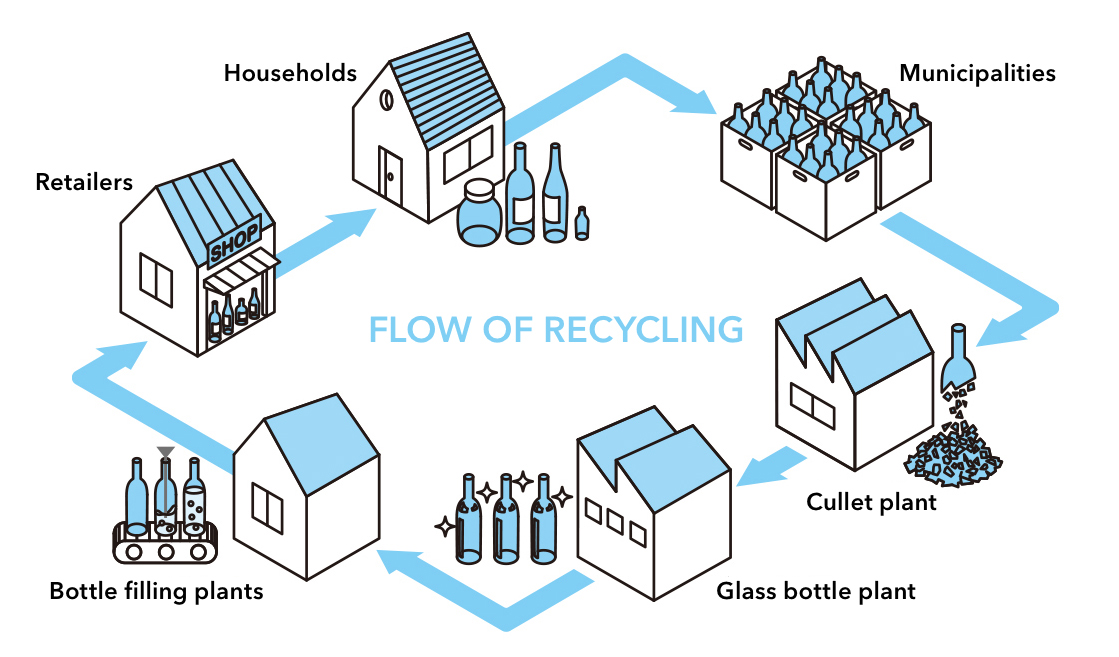
-
Permanent recycling
Because glass is inorganic, their composition stays unchanged without deterioration through repeated melting.
-
Save natural resources
Virgin materials can be saved by increasing the use of cullet.
-
Reduce CO2 emissions
By using cullet of high thermal efficiency, CO2 emissions during production can be suppressed.
About 70% of one glass bottle is made from cullet.
Virgin materials are used for only about 30% of one new glass bottle. A large part of a glass bottle is made from cullet (a recycled material). The strength or quality stays unchanged even with an increased percentage of cullet.
